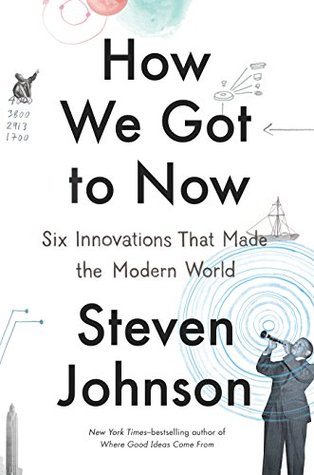More on this book
Community
Kindle Notes & Highlights
Read between
January 24 - January 27, 2021
Innovations usually begin life with an attempt to solve a specific problem, but once they get into circulation, they end up triggering other changes that would have been extremely difficult to predict.
silicon dioxide for some reason is incapable of rearranging itself back into the orderly structure of crystal. Instead, it forms a new substance that exists in a strange limbo between solid and liquid, a substance human beings have been obsessed with since the dawn of civilization.
Gutenberg made printed books relatively cheap and portable, which triggered a rise in literacy, which exposed a flaw in the visual acuity of a sizable part of the population, which then created a new market for the manufacture of spectacles.
This was Tudor’s frugal genius: he took three things that the market had effectively priced at zero—ice, sawdust, and an empty vessel—and turned them into a flourishing business.
when you have a leap forward in the accuracy of measuring something, new possibilities emerge.
Most discoveries become imaginable at a very specific moment in history, after which point multiple people start to imagine them.
The first transatlantic line that enabled ordinary citizens to call between North America and Europe was laid only in 1956.
In the first configuration, the system allowed twenty-four simultaneous calls. That was the total bandwidth for a voice conversation between the two continents just fifty years ago:
They found that clean drinking water led to a 43 percent reduction in total mortality in the average American city. Even more impressive, chlorine and filtration systems reduced infant mortality by 74 percent, and child mortality by almost as much.
If we think that innovation comes from a lone genius inventing a new technology from scratch, that model naturally steers us toward certain policy decisions, like stronger patent protection. But if we think that innovation comes out of collaborative networks, then we want to support different policies and organizational forms: less rigid patent laws, open standards, employee participation in stock plans, cross-disciplinary connections.
The march of technology expands the space of possibility around us, but how we explore that space is up to us.
If there is a common thread to the time travelers, beyond the nonexplanation of genius, it is this: they worked at the margins of their official fields, or at the intersection point between very different disciplines.
One of the reasons garages have become such an emblem of the innovator’s workspace is precisely because they exist outside the traditional spaces of work or research.
Don’t be trapped by dogma—which is living with the results of other people’s thinking. Don’t let the noise of others’ opinions drown out your own inner voice. And most important, have the courage to follow your heart and intuition.


